
Rabbit Anti-Aurora A antibody
AIK; ARK-1; ARK1; AURA; AURKA; Aurora 2; Aurora Family Kinase 1; aurora kinase A; Aurora Related Kinase 1; Aurora-related kinase 1; Aurora/IPL1 Like Kinase; Aurora/IPL1 Related Kinase 1; Aurora/IPL1-related kinase 1; AURORA2; AYK1; BRAK; Breast Tumor Ampl
View History [Clear]
Details
Product Name Aurora A Chinese Name 有丝分裂激酶A与Recombinant rabbit monoclonal anti Alias AIK; ARK-1; ARK1; AURA; AURKA; Aurora 2; Aurora Family Kinase 1; aurora kinase A; Aurora Related Kinase 1; Aurora-related kinase 1; Aurora/IPL1 Like Kinase; Aurora/IPL1 Related Kinase 1; Aurora/IPL1-related kinase 1; AURORA2; AYK1; BRAK; Breast Tumor Amplified Kinase; Breast tumor-amplified kinase; BTAK; hARK1; IAK; IPL1 Aurora Related Kinase 1; IPL1 Related Kinase; MGC34538; OTTHUMP00000031340; OTTHUMP00000031341; OTTHUMP00000031342; OTTHUMP00000031343; OTTHUMP00000031344; OTTHUMP00000031345; OTTHUMP00000166071; OTTHUMP00000166072; PPP1R47; Protein phosphatase 1, regulatory subunit 47; Serine/threonine kinase 15; Serine/threonine kinase 6; Serine/threonine kinase; Serine/threonine kinase; Serine/threonine-protein kinase 15; Serine/threonine-protein kinase 6; Serine/threonine-protein kinase aurora-A; STK15; STK6; STK6_HUMAN; STK7. literatures Research Area Tumour Cell biology Cyclin Kinases and Phosphatases Immunogen Species Rabbit Clonality Monoclonal Clone NO. 1A7 React Species Human, Rat, (predicted: Mouse, ) Applications WB=1:500-2000 IHC-P=1:100-400 IHC-F=1:100-400 Flow-Cyt=1:50 ICC=1:50 IF=1:100-400 (Paraffin sections need antigen repair)
not yet tested in other applications.
optimal dilutions/concentrations should be determined by the end user.Theoretical molecular weight 48kDa Cellular localization cytoplasmic Form Liquid Concentration 1mg/ml immunogen Recombinant human Aurora A protein, around C-terminal 250aa Lsotype IgG Purification affinity purified by Protein A Buffer Solution 0.01M TBS(pH7.4) with 1% BSA, 0.03% Proclin300 and 50% Glycerol. Storage Shipped at 4℃. Store at -20 °C for one year. Avoid repeated freeze/thaw cycles. Attention This product as supplied is intended for research use only, not for use in human, therapeutic or diagnostic applications. PubMed PubMed Product Detail The protein encoded by this gene is a cell cycle-regulated kinase that appears to be involved in microtubule formation and/or stabilization at the spindle pole during chromosome segregation. The encoded protein is found at the centrosome in interphase cells and at the spindle poles in mitosis. This gene may play a role in tumor development and progression. A processed pseudogene of this gene has been found on chromosome 1, and an unprocessed pseudogene has been found on chromosome 10. Multiple transcript variants encoding the same protein have been found for this gene. [provided by RefSeq, Jul 2008]
Function:
Contributes to the regulation of cell cycle progression. Required for normal mitosis. Associates with the centrosome and the spindle microtubules during mitosis and functions in centrosome maturation, spindle assembly, maintenance of spindle bipolarity, centrosome separation and mitotic checkpoint control. Phosphorylates numerous target proteins, including ARHGEF2, BRCA1, KIF2A, NDEL1, PARD3, PLK1 and BORA. Regulates KIF2A tubulin depolymerase activity. Required for normal axon formation. Plays a role in microtubule remodeling during neurite extension. Important for microtubule formation and/or stabilization.
Subunit:
Interacts with FBXL7. Interacts with CPEB1, JTB, TACC1, TPX2, PPP2CA, as well as with the protein phosphatase type 1 (PP1) isoforms PPP1CA, PPP1CB and PPP1CC. Interacts also with its substrates ARHGEF2, BORA, BRCA1, KIF2A, PARD3, and p53/TP53. Interaction with BORA promotes phosphorylation of PLK1. Interacts with PIFO. Interacts with GADD45A, competing with its oligomerization. Interacts (via C-terminus) with AUNIP (via C-terminus). Identified in a complex with AUNIP and NIN. Interacts with FRY; this interaction facilitates AURKA-mediated PLK1 phosphorylation.
Subcellular Location:
Cytoplasm.
Tissue Specificity:
Highly expressed in testis and weakly in skeletal muscle, thymus and spleen. Also highly expressed in colon, ovarian, prostate, neuroblastoma, breast and cervical cancer cell lines.
Post-translational modifications:
Activated by phosphorylation at Thr-288; this brings about a change in the conformation of the activation segment. Phosphorylation at Thr-288 varies during the cell cycle and is highest during M phase. Autophosphorylated at Thr-288 upon TPX2 binding. Phosphorylated upon DNA damage, probably by ATM or ATR. Ubiquitinated by CHFR, leading to its degradation by the proteasome. Ubiquitinated by the anaphase-promoting complex (APC), leading to its degradation by the proteasome.
Similarity:
Belongs to the protein kinase superfamily. Ser/Thr protein kinase family. Aurora subfamily.
Contains 1 protein kinase domain.
SWISS:
O14965
Gene ID:
6790
Database links:Entrez Gene: 6790 Human
Entrez Gene: 20878 Mouse
Omim: 603072 Human
SwissProt: O14965 Human
SwissProt: P97477 Mouse
Unigene: 250822 Human
Unigene: 249363 Mouse
Product Picture
Lane 1: K562 (Human) Cell Lysate at 30 ug
Primary: Anti-Aurora A (SLM-52018R) at 1/500 dilution
Secondary: Goat Anti-Rabbit IgG - HRP at 1/40000 dilution
Predicted band size: 48 kD
Observed band size: 46 kD
Paraformaldehyde-fixed, paraffin embedded (rat testis); Antigen retrieval by boiling in sodium citrate buffer (pH6.0) for 15min; Block endogenous peroxidase by 3% hydrogen peroxide for 20 minutes; Blocking buffer (normal goat serum) at 37°C for 30min; Antibody incubation with (Aurora A) Monoclonal Antibody, Unconjugated (SLM-52018R) at 1:50 overnight at 4°C, followed by operating according to SP Kit(Rabbit) (sp-0023) instructionsand DAB staining.Hela cell; 4% Paraformaldehyde-fixed; Triton X-100 at room temperature for 20 min; Blocking buffer (normal goat serum, C-0005) at 37°C for 20 min; Antibody incubation with (Aurora A) monoclonal Antibody, Unconjugated (SLM-52018R) 1:50, 90 minutes at 37°C; followed by a conjugated Goat Anti-Rabbit IgG antibody at 37°C for 90 minutes, DAPI (blue, C02-04002) was used to stain the cell nuclei.NIH/3T3 cell; 4% Paraformaldehyde-fixed; Triton X-100 at room temperature for 20 min; Blocking buffer (normal goat serum, C-0005) at 37°C for 20 min; Antibody incubation with (Aurora A) monoclonal Antibody, Unconjugated (SLM-52018R) 1:50, 90 minutes at 37°C; followed by a conjugated Goat Anti-Rabbit IgG antibody at 37°C for 90 minutes, DAPI (blue, C02-04002) was used to stain the cell nuclei.SKOV-3 cell; 4% Paraformaldehyde-fixed; Triton X-100 at room temperature for 20 min; Blocking buffer (normal goat serum, C-0005) at 37°C for 20 min; Antibody incubation with (Aurora A) monoclonal Antibody, Unconjugated (SLM-52018R) 1:50, 90 minutes at 37°C; followed by a conjugated Goat Anti-Rabbit IgG antibody at 37°C for 90 minutes, DAPI (blue, C02-04002) was used to stain the cell nuclei.Blank control: Hela.
Primary Antibody (green line): Rabbit Anti-Aurora A antibody (SLM-52018R)
Dilution: 1:50;
Isotype Control Antibody (orange line): Rabbit IgG .
Secondary Antibody : Goat anti-rabbit IgG-AF488
Dilution: 1:1000.
Protocol
The cells were fixed with 4% PFA (10min at room temperature)and then permeabilized with 0.1% PBST for 20 min at room temperature. The cells were then incubated in 5%BSA to block non-specific protein-protein interactions for 30 min at room temperature .Cells stained with Primary Antibody for 30 min at room temperature. The secondary antibody used for 40 min at room temperature. Acquisition of 20,000 events was performed.
References (0)
No References
Bought notes(bought amounts latest0)
No one bought this product
User Comment(Total0User Comment Num)
- No comment
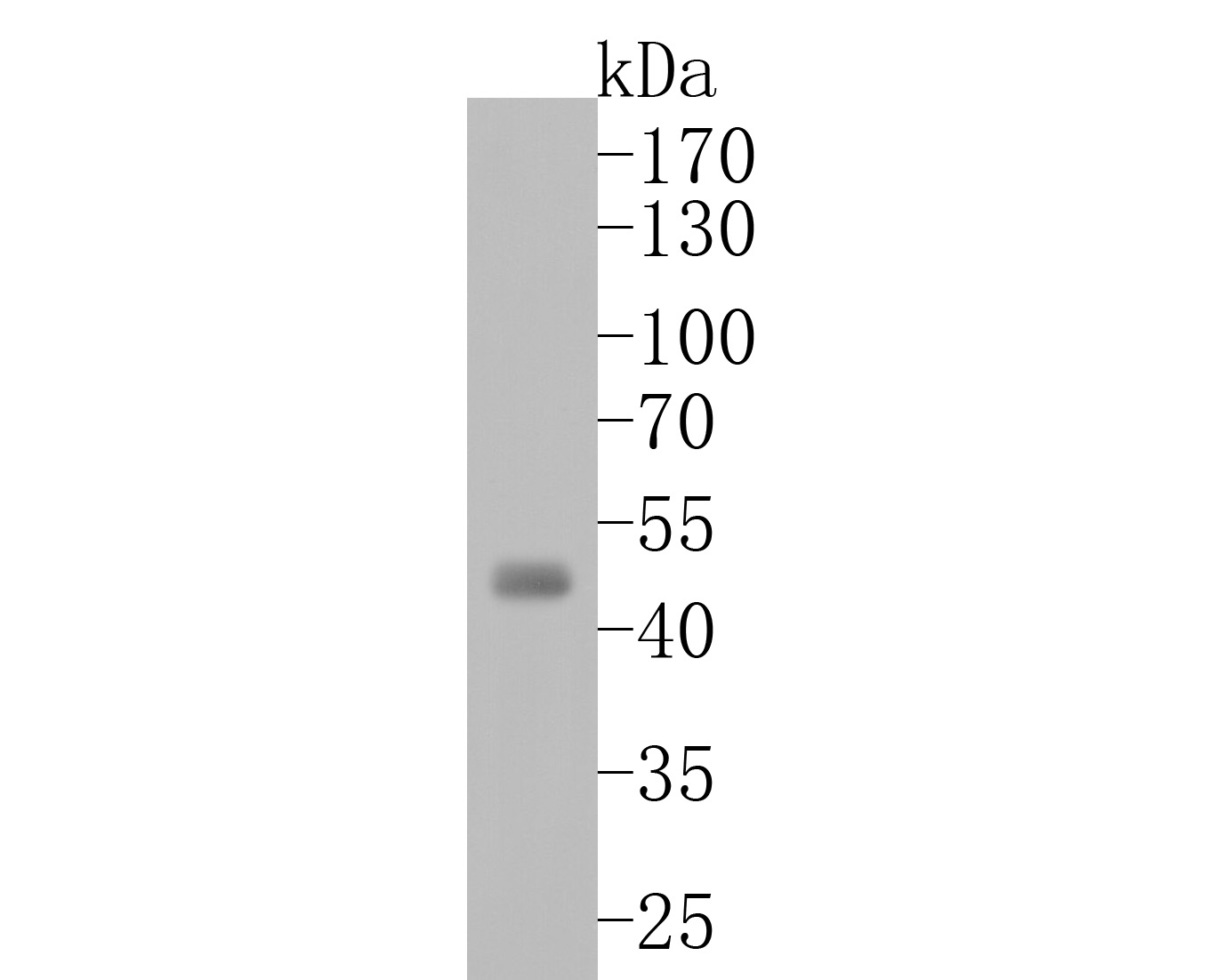
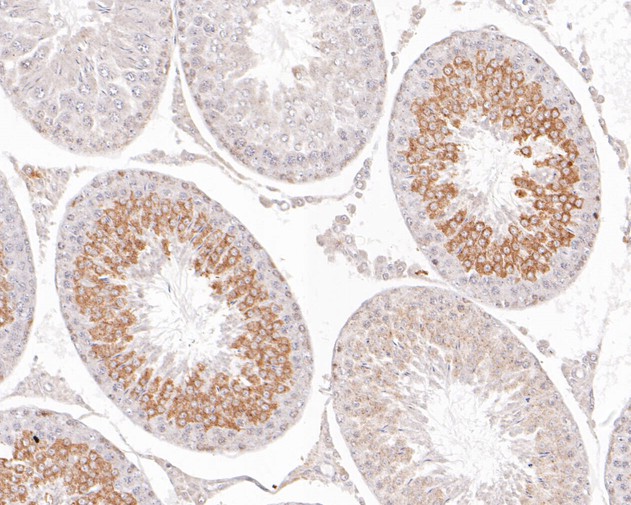
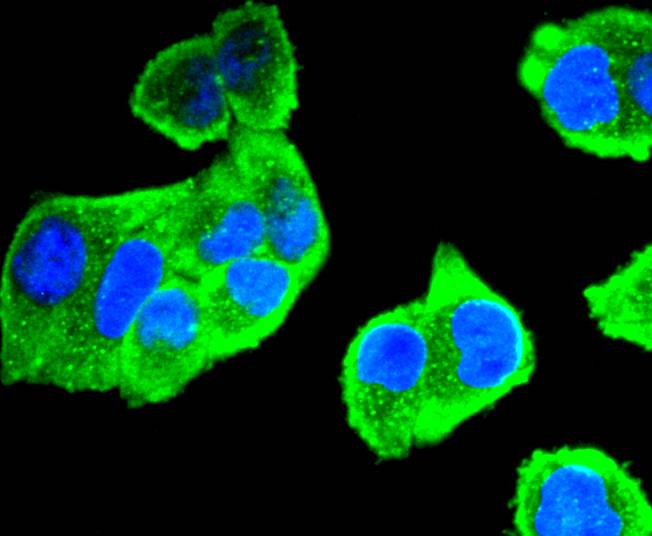
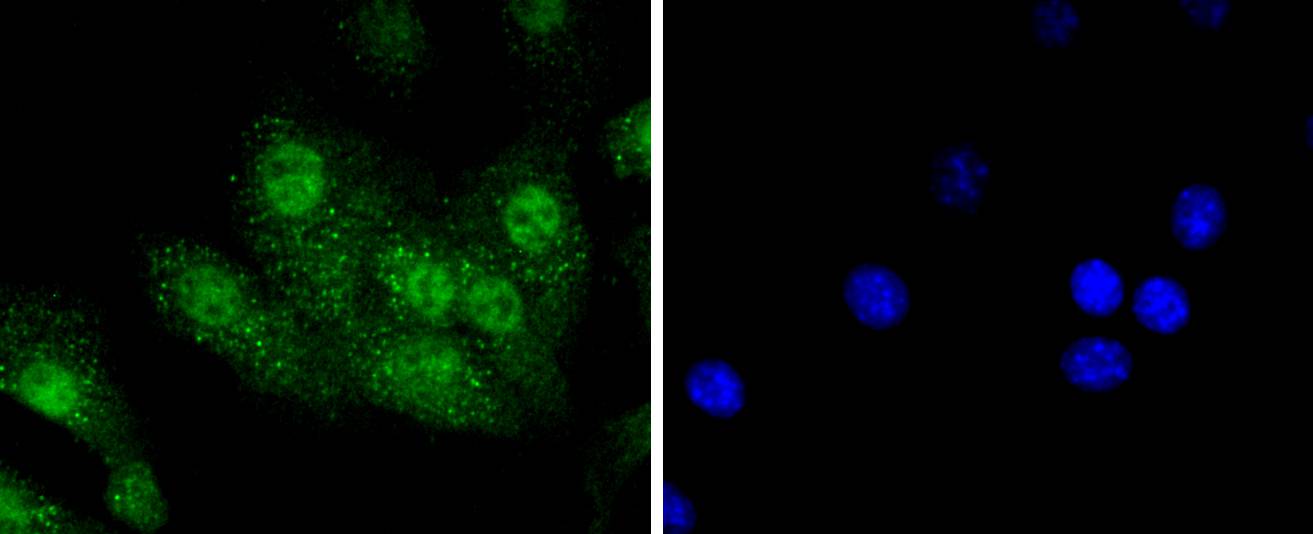
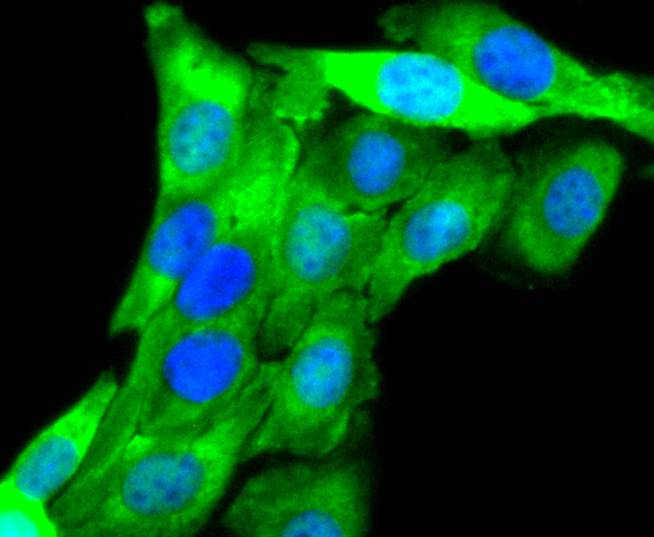
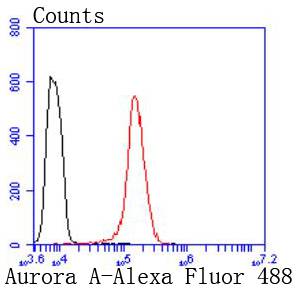


 +86 571 56623320
+86 571 56623320
 +86 18668110335
+86 18668110335

